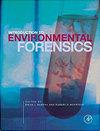How safe are the classrooms in nursery and primary schools?: The Nigerian study
IF 1.2
4区 环境科学与生态学
Q4 ENVIRONMENTAL SCIENCES
引用次数: 0
Abstract
Abstract Environmental pollution caused by potentially toxic elements (PTE) from various anthropogenic sources has become a global concern. An estimated 7 million premature deaths occur globally each year owing to ambient and indoor air pollution. This study assessed the concentration of PTE, level of contamination and human health risks of dust samples collected from classrooms in Abeokuta, South-Western Nigeria. Samples were collected from windowsills, chair, tables, and corners of the classrooms. Digestions of the samples were performed at College of Environmental Resource Management, Federal University of Agriculture, Abeokuta, Ogun state, Nigeria. PTE analyses revealed that the concentration of PTE (Cd, Cr, Cu, Fe, Ni, Pb, and Zn) measured were all within acceptable safe limit levels suggesting they were not contaminated. Pollution assessment tools employed (Enrichment factor and Contamination factor) revealed a descending order pattern of Cd > Pb > Zn > Cu > Cr > Ni > Fe. Source apportionment studies showed Cd, Cu, and Pb may have originated from anthropogenic sources, Cr and Ni from natural sources while Fe and Zn appeared to have emanated from mixed sources (natural and anthropogenic). The hazard quotient and hazard index values were lower than the safe limit of 1 suggesting no significant non-cancer effect to children and adult populations. Ingestion was the major exposure route for PTE followed by dermal contact and inhalation in that order. Cancer risk estimations were within the permissible limit of 10−6 to 10−4 and therefore suggests no carcinogenic effects, except for Cr. Furthermore, Cr was the predominant contributor to cancer effects and accounted for 96% for both children and adult populations. Regular monitoring of dust particulates is necessary to keep PTE contents low in the ambient air and consequently reduces human exposure to health risks.幼儿园和小学的教室安全吗?:尼日利亚的研究
本文章由计算机程序翻译,如有差异,请以英文原文为准。
求助全文
约1分钟内获得全文
求助全文
来源期刊

Environmental Forensics
环境科学-环境科学
CiteScore
4.90
自引率
5.60%
发文量
23
审稿时长
3 months
期刊介绍:
Environmental Forensics provides a forum for scientific investigations that address environment contamination, its sources, and the historical reconstruction of its release into the environment. The context for investigations that form the published papers in the journal are often subjects to regulatory or legal proceedings, public scrutiny, and debate. In all contexts, rigorous scientific underpinnings guide the subject investigations.
Specifically, the journal is an international, quarterly, peer-reviewed publication offering scientific studies that explore or are relevant to the source, age, fate, transport, as well as human health and ecological effects of environmental contamination. Journal subject matter encompasses all aspects of contamination mentioned above within the environmental media of air, water, soil, sediments and biota. Data evaluation and analysis approaches are highlighted as well including multivariate statistical methods. Journal focus is on scientific and technical information, data, and critical analysis in the following areas:
-Contaminant Fingerprinting for source identification and/or age-dating, including (but not limited to) chemical, isotopic, chiral, mineralogical/microscopy techniques, DNA and tree-ring fingerprinting
-Specific Evaluative Techniques for source identification and/or age-dating including (but not limited to) historical document and aerial photography review, signature chemicals, atmospheric tracers and markets forensics, background concentration evaluations.
-Statistical Evaluation, Contaminant Modeling and Data Visualization
-Vapor Intrusion including delineating the source and background values of indoor air contamination
-Integrated Case Studies, employing environmental fate techniques
-Legal Considerations, including strategic considerations for environmental fate in litigation and arbitration, and regulatory statutes and actions
 求助内容:
求助内容: 应助结果提醒方式:
应助结果提醒方式:


